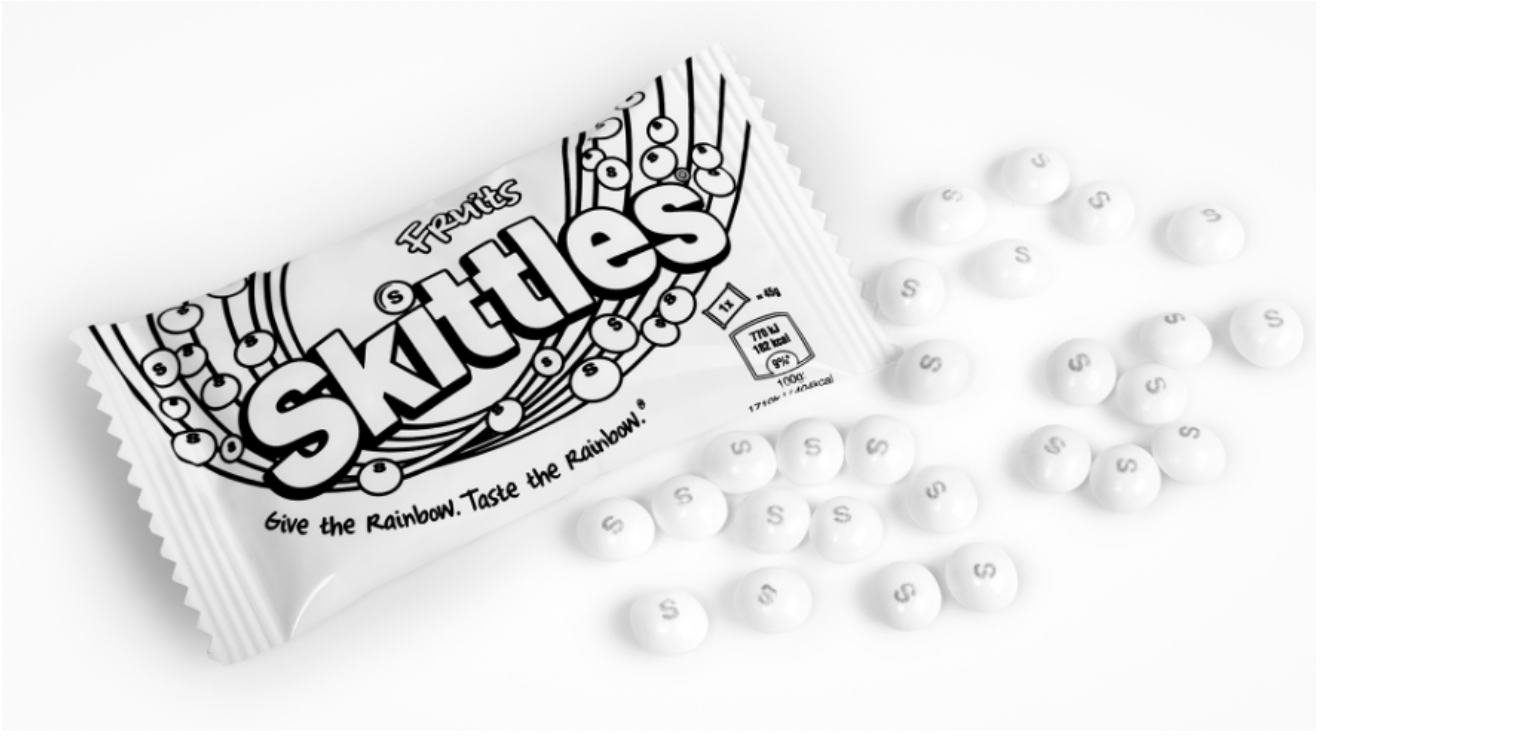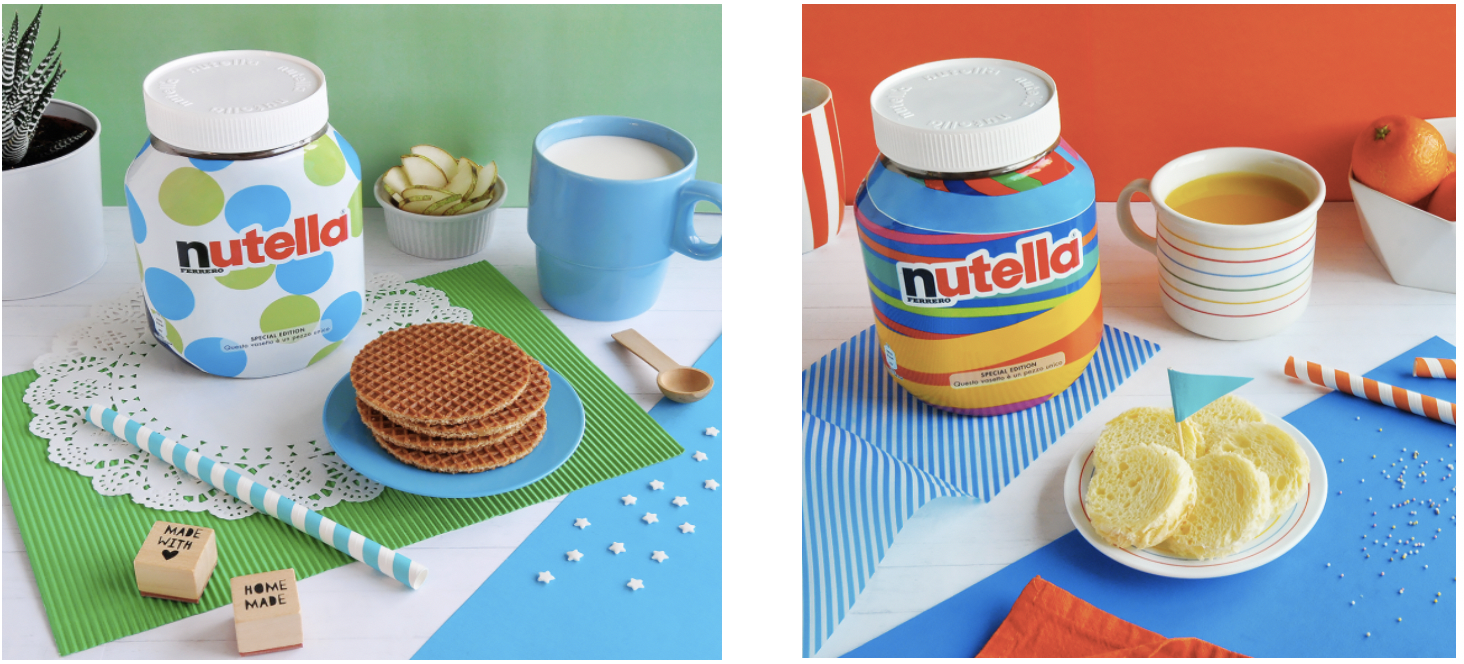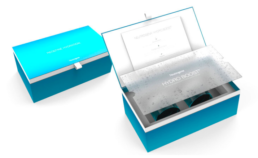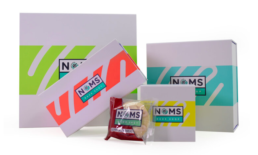There's Still Time to Design Your Way into a Great Holiday 2020 Season
designer
Seasonal Packaging: Brand Recognition at Your Fingertips
How important is seasonal and holiday packaging to brands? Considering that packaging has become the primary face of any brand and product, regardless of the time of year or season, it is safe to say it is extremely important. A company’s brand tells a story—it adds personality and animation into the consumer’s perception of that company. As brands compete for attention in an ever-growing market of products, packaging has become key to helping brands rise above the clutter and there’s no better time than the holidays to put a limited edition special pack or promotional kit in-stores/online. There’s just enough time to start and finish a project efficiently (adding to your ROI) if you get going in April.
A Quick History Lesson
While holiday or seasonally-themed product packaging may seem like a relatively new concept, the act of packaging gifts has been around for centuries. Originating in Asia, around 2nd Century B.C., the Song Dynasty would gift money to government officials in ornamental envelopes made of bamboo, hemp, and rice.
In the West, elaborate packaging was much slower to catch on. The Christmas card wasn’t developed until 1843, and took until the 1860’s to gain increased popularity.
Especially around Christmas, the increase in popularity of cards eventually led to the development of Victorian decorative papers to accompany the cards. These papers, however, were expensive to produce and were only affordable to the wealthy.
As gift-giving became more accessible to the masses, packaging became more popular as well. Ranging from wrapping paper and ribbons to printed boxes and unique containers, more varieties of packaging were created to satisfy holiday and seasonal needs.
So, what are some of the best ways to rise to the top during any season, holiday, or event? Here are a few steps to determining how to choose the best packaging for your target customers, all year round:
1. Choose your holiday (or season, or celebration…)
Depending on your product, some holidays will be more effective for holiday packaging. Foods and beverages normally do well on all occasions—Valentine’s Day, Easter, 4th of July, Halloween, Thanksgiving, and Christmas, for example. Other products might find it harder to make connections as easily, but could make a huge splash with seasonal milestones that are aligned with their brand voice and point of view.
As an ever-increasing number of celebrations pop up on a global scale, like Pride week, Women’s Day, Earth Day, and China’s Single’s Day, products and packaging can find ways to attract more consumers and boost brand recognition and loyalty.
For example, Skittles found a way to support Pride week with their “Give the Rainbow” packaging, where they changed their rainbow-colored candies and packaging to white.

Image: AdWeek, June 2016
2. Order appropriately
When planning seasonal and celebratory packaging, there are more things to consider than design. As exciting as it may be to showcase great packaging for the occasions, be sure your forecast is dialed.
There are ways to avoid this, of course. One way is to include packaging changes that can be removed, such as a label or ribbon. Another way is to make limited time only GWP or PWP special-packs that are easy to gift and typically under $29 retail encouraging busy shoppers to buy more than one.
3. Show them something special
During high-purchase holidays, vying for shoppers’ attention is competitive. Adding a touch of creativity to primary and secondary packaging designs are ways to rise above the noise.
Nutella proved this with its idea of offering customers the chance to personalize jars with their names or to purchase original packaging designs labeled as “limited editions” (7 million designs, to be exact)—to great success. We’d love to see them do this again with multiple trial-size snacks that are fun to dip — would be great social media fuel.

Image: DeZeen, June 2017

Image: The Body Shop, 2018
4. Make it sustainable
Sustainable packaging is also a way companies can reinforce special packaging—for holidays, celebrations (like Earth Day), or an all-year commitment, especially with millennials and Gen Z, though not limited to them. Consumers are more conscious than ever about reducing their ecological footprint and demanding companies provide more environmentally friendly packaging. One way to respond to this is by offering reusable packaging such as ornate bottles, good TSA bags, dopp kits, clutches, or hinged cases. The Body Shop is known for this, often presenting its gift ranges in tins that buyers can put to other purposes once they have used the product itself.
5. Create something luxurious
Clearly, product packaging for holiday, seasonal, and celebratory events must be extraordinary and special in some way. To stand out, you need a great packaging design for the products you provide (primary) and the secondary packaging so you can boost sell-through, paying attention to both the visual and tactile elements.
Luxury packaging is an art, and a custom box can be the canvas. Here are some practical tips for creating experiential packaging that keep consumers coming back for more:
-
Visual: Choose the right color! Simply put, the right color sells more. Human eyes are especially attuned to the subtle influence of color and, of course, it helps if the color you imagine during the design is the actual color that prints. Special, custom colors and finishes are a great way to give packaging a one-of-a-kind, distinctive look. Those custom colors stand out in wall of brown boxes, greens and reds and Christmas time, or the standard “natural” colors that line the shelves.
-
Tactile: The sense of touch is important, and as Vivabox has said many times before, it is usually one of the only physical touchpoints a consumer has with a brand. Human beings are wired to respond to physical touch, so the experience is important to brand recognition and loyalty. For example, because consumers are influenced by the look and feel of packaging when making purchase decisions, a well-designed custom box can be embossed (raised lettering or artwork) or it can be debossed (recessed), it can be coated in felt, RPET, papers that feel like wood or linen, and so much more.

Image: Neutrogena Hydro Boost, 2019
Every consumer is influenced by packaging. It’s important to remember that the person buying your product is more than likely buying it for someone else. Since they are buying for other people, first impressions matter, mainly because many consumers consider the outside packaging to be a reflection of the quality of the product inside.
Although holidays and certain seasons can be busy, your brand and business can benefit from these packaging strategies, if planned correctly. Vivabox can help your brand meet modern packaging needs for any holiday or seasonal event. Contact us for details.
Looking for a solution? We can help.
Headquarters
9211 Corporate Blvd Ste 110
Rockville MD 20850
Satellite Offices
Dallas, TX
Paris, France
San Francisco, CA
Scottsdale, AZ
info@vivaboxsolutions.com
Phone
800-529-1988
Minimum Order Quantities:
RPET Totes: 3,000
Kraft Shoppers: 5,000
Rigid Boxes: 3,000
Folding Cartons: 5,000
How to Promote a New Product to Customers
designer
One of the biggest challenges a brand faces when launching a new product is trying to figure out the best way to generate consumer interest. After all, most of us are loyal to certain brands and products, and it can be difficult to get people to try something new. This is especially true when the product being marketed has a lot of well-known competitors. How can a marketing team ensure that their brand’s product will be able to be seen- and hopefully purchased- by the right audience? Using custom packaging to help your product stand out against competing brands can help you attract your target market.
Of course, not all custom packaging is created equal. Certain factors affect the subconscious mind of the consumer when looking at packaged products, and can make a customer rank products as more or less attractive, based on the physical attributes of the packaging it comes in. A 2013 study (https://onlinelibrary.wiley.com/doi/abs/10.1002/mar.20651) revealed that attractive packaging triggered more intense brain activity, particularly in the areas of the brain associated with impulsivity when compared with neutral packaging. Additionally, both attractive and unattractive product packaging led to less activity in areas of the brain responsible for reflective thought than neutral packaging. This means that a customer tends to go with his or her gut reaction to a product, and the way it is packaged can make all the difference!
Using Custom Packaging to Promote Your Product
A product’s packaging can be far more important than you may think. Customers get their first impression of a product by looking at its packaging and can make snap decisions based on their initial reaction. For this reason, it is critical to ensure that your brand new product’s packaging stands up to the ultimate test of consumer preference. But how can you be sure that your product’s custom packaging generates the level of interest and excitement your brand needs to make people purchase the product? Here are some of the key psychological factors that make a consumer choose one brand’s product over another.
Color
Did you know that most people make subconscious judgments about a product within the first 90 seconds of seeing it? Not only that but the majority of consumers- nearly 85 percent!- base these first impressions on color alone. When it comes to custom packaging your new product, color is perhaps one of the most important factors to consider. Certain colors are believed to be more eye-catching than others, based on research. Using these colors- red, yellow, green, and pink- in your product’s packaging design may help to increase the likelihood of a customer looking at your product first. However, this doesn’t mean that every single product on the market should be packaged in one of these four colors; in fact, doing this would create an opposite effect on consumers, causing them to potentially pass your product up for blending in with all the rest. By ensuring that your product’s custom packaging is in a different color than any of the competitors in your market, you can create what is known as the “isolation effect” and capture your audience’s attention by being different from the rest. Bottom line: if your competitors all use pink in their packaging, use green. Dare to be different, and you may receive more positive attention because of it! It’s also important to consider the emotional connotation certain colors have with people. For example, blue and lavender are considered soothing colors, which is why they may be best suited for calming products, such as spa treatments or moisturizers. Meanwhile, products for the kitchen need to be associated with cleanliness, which is why white or silver are the most popular colors for the packaging of small appliances. By considering your product’s function, you can strike upon the appropriate color for your custom packaging.

Shape
Quick, what’s the shape of a Coca-Cola bottle? How about a can of Pringles potato chips? Sometimes, it’s the shape of product packaging that makes it stand out against the sea of competitors. While it isn’t often that a product’s custom packaging becomes more iconic than the product itself, like in the two above examples, thinking about how shape can affect a consumer’s choice can help you find the right direction for custom packaging your new product. While there is no such thing as one “right” shape for a product package, there are some things to keep in mind about psychology when you are trying to hit on just the right packaging design. For example, people tend to prefer curves to straight lines and, in fact, show a bias toward sharp, angular shapes in product packaging. This can be because of the way they perceive the product packaging will feel in their hands and naturally gravitate toward packages that are smoother and easier to hold. All of these consumer preferences are something you’ll want to strongly consider f you decide to literally think outside the box when it comes to custom packaging your product.
Texture
Product packaging that includes a distinctive texture can be beneficial in two distinct ways: not only can it help make your product easily identifiable even by touch, but it can also create a pleasing tactile experience for your customer that gives them a positive association with your brand and the product itself. Choosing a fun texture will encourage consumers to hold your product’s package for longer than they may have with an untextured package. This, of course, can lead to them purchasing the product, even if they didn’t intend to buy anything at all! Smooth matte and high-gloss surfaces can be used to make custom packaging pleasing to the touch, as can soft, fluffy textures. Using texture in your product packaging can also help convey a certain air of elegance or prestige about your brand, causing customers to look upon it as a luxury item. Some brands that market high-end products rely on texture to connote an upscale, sophisticated feeling and make customers feel elegant for choosing them. Depending on the nature of your brand and product, you can make an appropriate choice for a custom packaging texture that makes customers want to hold it forever!
It’s easy to overlook the print on a product’s custom packaging, especially when you are already thinking about its color, shape, and texture! However, typography can make a huge difference in the success of a product. Since customers who are unfamiliar with your new product will be inspecting the package for information about it, they will be sure to make a stronger connection with packaging that contains a font that resonates with them. It goes without saying that easy-to-read text will help your customers better understand the attributes of your product in a shorter time, but there is something to be said for an ornate script if that font better exemplifies the nature of your brand. Once again, choosing the typography that will accompany your other custom packaging choices is more about understanding the mission and story of your brand: try to choose a font that is short-hand for your brand identity and how you want to be perceived by your audience. For example, products that are more whimsical in nature, such as children’s toys, are best served by a playful, handwritten-looking font, whereas a luxury brand might opt for a serif print font to add a certain old-school weight to the packaging.
By understanding how you want your product to be perceived by the public, as well as knowing your target audience, you will be able to hit upon a winning packaging design that can get you noticed by the right people. Be sure to refer to these four key factors and see how your custom packaging design stacks up!
Looking for a solution? We can help.
Headquarters
9211 Corporate Blvd Ste 110
Rockville MD 20850
Satellite Offices
Dallas, TX
Paris, France
San Francisco, CA
Scottsdale, AZ
info@vivaboxsolutions.com
Phone
800-529-1988
Minimum Order Quantities:
RPET Totes: 3,000
Kraft Shoppers: 5,000
Rigid Boxes: 3,000
Folding Cartons: 5,000





